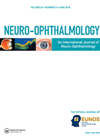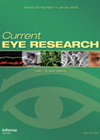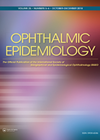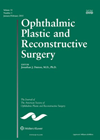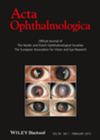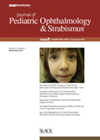
Journal Reviews archive for October 2015
Selection of visual field test for detection of pituitary disease
This prospective cross-sectional diagnostic accuracy study compared Octopus semi-automated kinetic perimetry (SKP) and Humphrey static automated central perimetry for detection of neurological visual field loss in patients with pituitary disease. Humphrey central 30-2 SITA threshold programme results were compared with...
Association between neuro-ophthalmology signs and chronic ataxia in children
Neuro-ophthalmological signs (N-OS) occur commonly in children with chronic ataxia. This study describes the N-OS and their frequencies, in general and by specific disease aetiology in paediatric patients with chronic ataxia. In total, 184 patients under the age of 17...
Visual outcomes, visual fields and optical coherence tomography in paediatric craniopharyngioma
This study reviews the visual outcomes of ten patients under the age of 18 years with craniopharyngioma. The paper also reviews the correlation between visual field (VF) testing and optical coherence tomography (OCT) examination and evaluates the role of OCT...
Meibomian gland alteration in patients with primary chronic dacryocystitis: An in vivo confocal microscopy study
Chronic dacryocystitis affects tear film functionality and can predispose to ocular surface disease, however the specific effect of chronic dacryocystitis on meibomian gland function has not been studied. This group therefore performed in vivo confocal microscopy in 28 patients’ eyes...
Systemic rituximab immunotherapy in the management of primary ocular adnexal lymphoma single institutional experience
Ocular adnexal lymphomas constitute 2% of all non-Hodgkin’s disease and 5-15% of all extranodal lymphomas and are usually localised, low-grade and of B-cell origin. This opens them up to potential treatment with a systemic monoclonal antibody-based drug (rituximab) directed at...
Lower postoperative scar height is associated with increased postoperative trichiasis one year after bilamellar tarsal rotation surgery
Bilamellar tarsal rotation has been a key component of the WHO SAFE approach to blindness from trichiaisis (surgery, antibiotics, facial hygiene, environment). The World Health Organisation (WHO) manual describes the procedure as a full thickness blepharotomy placed 3.0mm above and...
Task shifting for eye care in Eastern Africa
More than eight million people suffer with trichiasis due to trachoma globally, but less than 160,000 receive surgery per year even though “S” is a key aspect of the elimination of blindness due to trachoma as part of the WHO...
Ointment related granulomas post-blepharoplasty
This is a retrospective review of eight patients who developed granulomatous masses after lower lid blepharoplasty. All patients had sutureless bilateral trans-conjunctival surgery, and lubricating ointment was instilled into the inferior fornix postoperatively for two days. Painless lower lid masses...
Biodegradable plates in lateral orbitotomy surgery
This is a description of a new method for fixating the bone flap during a lateral orbitotomy. The technique involves the use of an absorbable lactide plate. This is warmed in a water bath to allow trimming and moulding to...
Evaluating ocular motor functions
Traditionally orthoptists are specialised in assessing ocular motor disorders. This article introduces the ocular motor score as a new clinical tool for screening and follow-up for children and young adults. The protocol consists of 15 tests such as stereoacuity, strabismus,...
Expert vs. non expert grading of ROP from digital video images
The primary purpose of this study was to determine whether digital video images of the retina obtained using an indirect ophthalmoscope imaging system could be accurately graded for zone and stage of retinopathy of prematurity (ROP) and the presence of...
Silicone rod for ptosis surgery
The authors report their results and complications associated with the use of silicone rod for frontalis suspension lid surgery. This was a retrospective study of 38 eyes (25 patients) with six months follow-up. The group included 19 males and six...

